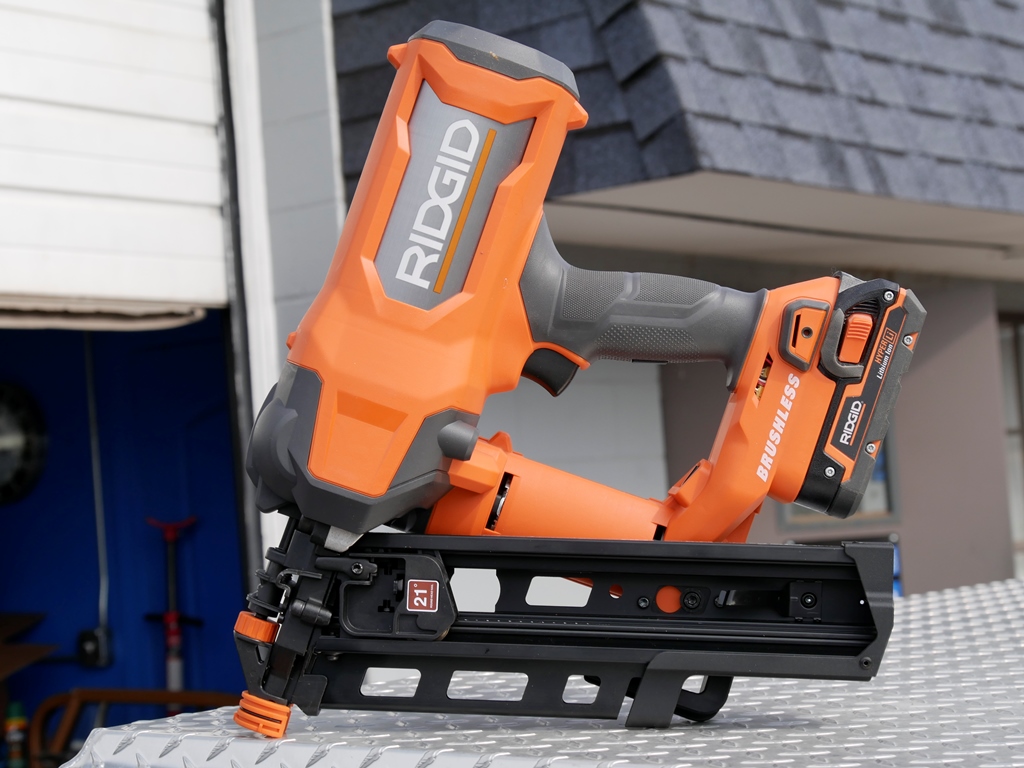What Is a Nail Gun?
A nail gun is a powered device designed to drive nails into wood, concrete, or other materials faster and with more consistency than a hammer. Whether you're framing a house, trimming out windows, or installing flooring, a nail gun saves time and reduces fatigue. It’s all about speed, accuracy, and holding power.
There are different types built for different jobs from heavy-duty framing to fine finish work. Choosing the right one depends on what kind of work you do and how often you’re doing it.
History of the Nail Gun
The nail gun was developed in the 1950s to increase speed and efficiency on construction sites. Early versions were air-powered and mainly used for framing. As the technology improved, nail guns expanded into finish work, roofing, flooring, and even light DIY. Today, you’ll find pneumatic, cordless, and gas-powered models, with brands like Paslode, DeWALT, Bostitch, and Metabo HPT leading the market.
What It’s Used For
Nail guns are built to speed up repetitive fastening jobs. Common uses include:
What to Look for When Buying
Type of Nail Gun
- Framing Nailer: For structural framing, fencing, and sheathing
- Finish Nailer (15 or 16 gauge): For baseboard, door trim, and cabinets
- Brad Nailer (18 gauge): For delicate trim, small molding, and craft work
- Pin Nailer (23 gauge): For ultra-fine work and holding without visible holes
- Roofing Nailer: For asphalt shingles and roofing fe
- Flooring Nailer: Specifically designed for tongue-and-groove flooring
Power Source
- Pneumatic (Air-Powered): Reliable and powerful, requires an air compressor
- Cordless (Battery): Portable and convenient, best for smaller jobs or mobility
- Gas-Powered: Used in some framing and roofing guns, combines fuel and battery for high power
- Electric (Corded): Mostly found in lightweight brad nailers or staplers
Nail Capacity and Magazine Style
- Look for angled or straight magazine based on what fits your workspace
- Larger magazine = fewer reloads
Depth Adjustment
- Allows you to set how far the nail drives into the material
- Important for finish work or working with different densities
Jam-Clearing Mechanism
- Quick-access systems save time when a nail misfires or binds
Trigger Type
- Sequential Trigger: Safer, requires tip contact before firing
- Bump (Contact) Trigger: Faster but riskier, fires each time you tap the nose
Pros and Cons
Pros
Cons
Nail and Accessory Compatibility
Nail guns require the right nails for both gauge and angle. Here’s a quick breakdown:
- Framing: 21° or 30–34° clipped or round-head nails
- Finish: 15 or 16 gauge, straight or angled
- Brad: 18 gauge, up to 2 inches
- Pin: 23 gauge, for tiny holes and no splitting
- Roofing: Coil nails
- Flooring: Cleats or staples, depending on the model
Always check the owner's manual for supported lengths and brands—some models are picky.
Safety and Maintenance Tips
Who This Is For
- Homeowners tackling remodeling, fencing, or light framing
- DIYers working on trim, furniture, or custom builds
- Pros in framing, carpentry, roofing, flooring, and finish work
If you're driving nails repeatedly, using a nail gun is faster, cleaner, and more efficient than a hammer every time.
FAQ
No. A framing nailer won’t do trim work well, and a brad nailer won’t hold framing together. You need the right type for the job.
For power and runtime, yes. But cordless is more convenient for small jobs, mobility, or when you don’t want to drag a hose.
Only if it’s a combo stapler-nailer. Regular nail guns are not built for staples.
Final Thoughts
A nail gun saves time, improves accuracy, and makes your projects look cleaner. Whether you're rough framing or installing delicate trim, the right model makes all the difference. Pick one that fits the kind of work you do most often, and make sure you use the right nails, depth settings, and safety practices. Once you start using one, you won’t want to go back to hand-nailing.

